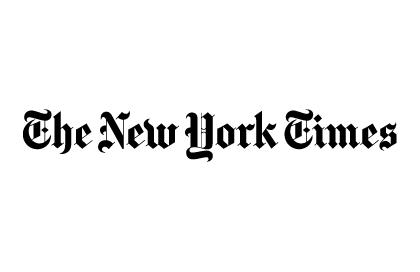Back in June, I wrote about my effort to seek answers from The New York Times public editor’s office regarding the paper’s lack of a policy for disclosure of possible conflicts of interest among op-ed contributors. In my query to the NYT, I specifically cited the example of Robert Bryce from the Manhattan Institute, a group funded by Koch Industries, ExxonMobil and other polluters to confuse the public about climate change and energy issues.
Bryce had penned an op-ed attacking renewable energy while promoting nuclear and fracked shale gas, with no disclosure in his byline about the Manhattan Institute’s fossil fuel clients. I offered Bryce’s piece as an example in order to formally seek answers about the disclosure policy at the Times and whether it was adequate in light of the failure to disclose Bryce’s dirty energy backing.
I didn’t get a concrete answer from Public Editor Arthur Brisbane’s office – his assistant acknowledged that “this is a topic that interests due to the number of emails we receive from readers on it,” but rather than answer my questions or take action to highlight the policy oversight, he told me “We’re going to keep your email on file in the event that we decide to tackle this issue in the future.”
With our attention at DeSmogBlog diverted in the ensuing months by the Keystone XL pipeline controversy, the ever-growing list of the Koch Brothers’ threats to decency and democracy, and other dirty energy issues to focus on, I felt that another group would be better suited to devote attention to the NYT disclosure matter. I asked my friend Gabe Elsner at the Checks & Balances Project to take a look at my blog about Bryce and the failed efforts to get a satisfactory answer from the NYT Public Editor’s office.
Well, I’m grateful to Gabe for following through, since the issue is finally gaining some recognition, with the launch of TrueTies.org (designed by Checks and Balances Project) and a petition by 50 journalists echoing the call for The New York Times to lead the industry by creating a disclosure policy for op-ed contributors.
A few examples of the media coverage of the True Ties petition:
The Columbia Journalism Review: Journos Call For More Transparency at NYT Op-Ed Page
The Guardian: US journalists launch campaign for ‘op-ed transparency’
World Editors Forum: Transparency at the New York Times
As regular readers of DeSmogBlog know, especially readers of our president Jim Hoggan’s book Climate Cover-up, there is a cottage industry of dirty energy front group mouthpieces who use this tactic of placing op-eds without disclosing their funding conflicts – Bryce is not the only one failing to disclose his “True Ties” by a long shot. DeSmogBlog has raised dozens of examples of this front group media activity in both U.S. and Canadian news outlets, and beyond.
It’s a recurring problem that needs to be addressed in order for people to know the interests that lie beneath an innocent sounding group like the Manhattan Institute – which an unsuspecting reader might mistake for a great name for a cocktail club, or worse, a legitimate source of unbiased information.
The New York Times, well-respected for its journalistic integrity, is the perfect outlet to set the tone in the journalism industry by fixing this PR pollution with a simple disclosure policy requiring all op-ed contributors to reveal their funding sources.
Hopefully, the NYT will embrace this opportunity, which will help to rid industry propaganda from its influential opinion pages, and by extension, inspire other news outlets to follow suit.
Subscribe to our newsletter
Stay up to date with DeSmog news and alerts







